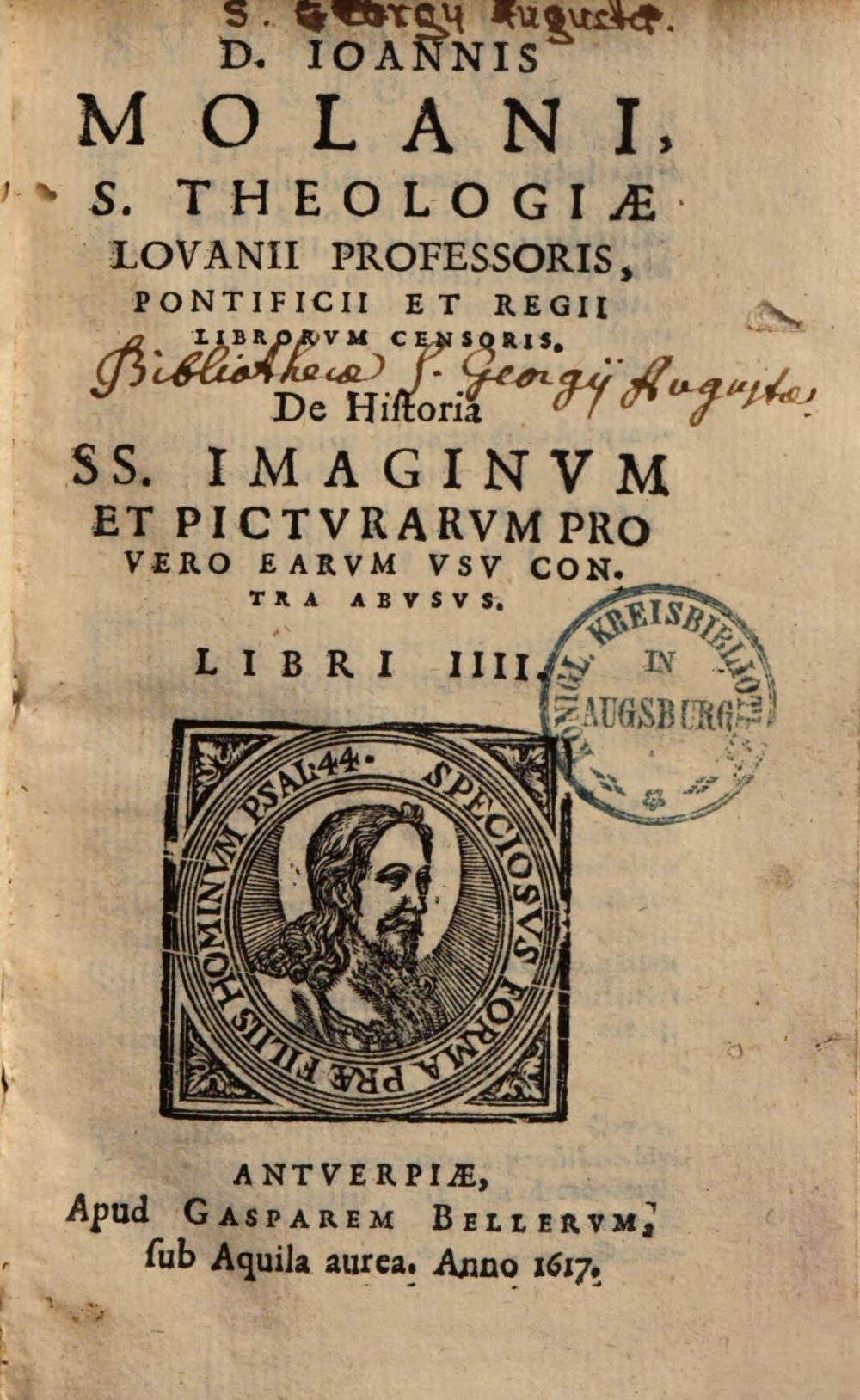
Augsburg, Staats- und Stadtbibliothek — Th H 1475. Digital Reproduction: München, Bayerische Staatsbibliothek, 2015.
Molanus argues that artworks depicting virtuous persons from antiquity can inspire virtue in Christians nowadays.
“Just as the reading of certain sayings or memorable facts of the pagans makes a great impression on Christians, so it is not without usefulness to place the painting of them before our eyes so that they may induce us not to feel inferior to the pagans. Sallustus describes at the beginning of the war of Jugurtha what great utility the pagans derived from the sight of images: ‘I have often heard Q. Maximus, P. Scipio and other great Roman citizens say that when they looked at the images of their ancestors, they felt an ardent love for virtue. It was not wax or portraiture that had such power over them, but the memory of great deeds kept the flame alive in the hearts of these great men and did not allow it to weaken until by their virtue they had equalled the reputation and glory of their fathers.'”
“Itaque sicut ethnicorum dicta et facta memorabilia quaedam, si legantur multum afficiunt Christianos sic eadem depicta non inutiliter oculis obiiciuntur Christianorum et urgent ne patiamur nos a pagani superari. Hi vero quantum utilitatis ex imaginum inspection ceperint, scribit Crispus Sallustius initio belli Iugurrini. Nam saepe, inquit, audivi ego Q. Maximum, P. Scipionem, praeterea civitatis nostrae praeclaros viros solitos ita dicere: ‘Cum maiorum imagines intuerent ut vehementissime animum sibi ad virtutem accendi scilicet non ceram illam neque figuram tantam vim in se habere, sed memora rerum gestarum eam flammam egregiis viris in pectore crescere, neque prius sedari, quam virtus eorum famam atque gloriam adaequaverit.'”
Molanus 1996, 303.



